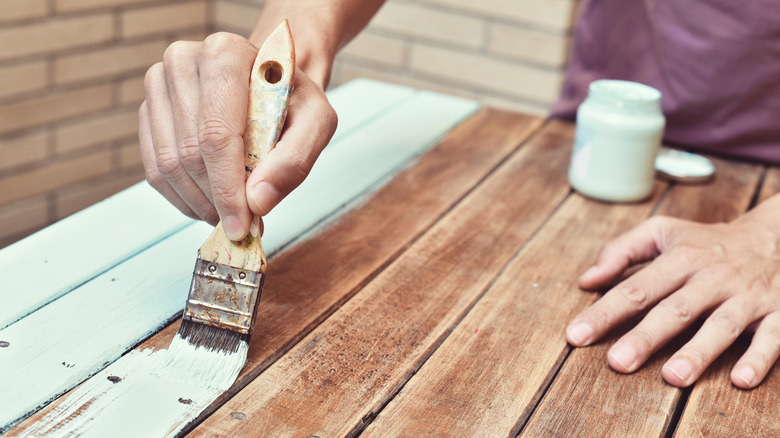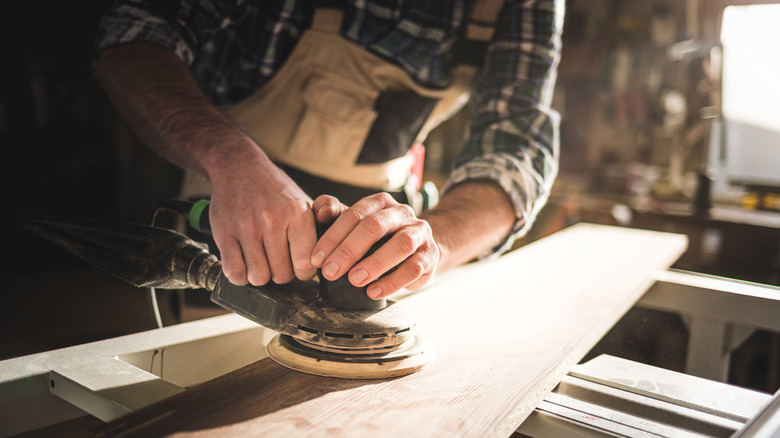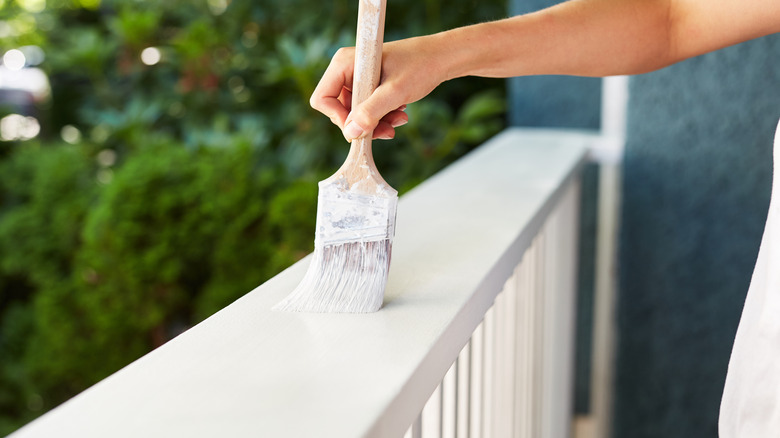Can You Paint Over Stained Wood?
Finding a beautiful project piece at a thrift store, flea market, or antique mall is always a great experience. Whether you want to restore it to its original beauty or turn it into something completely new, the opportunities are endless. You'll likely face a few issues, though, especially with older furniture. Stains, wrinkles in the wood from heat exposure, old hardware, and more can be challenging to deal with.
One question someone wanting to transform their furniture may ask is if you can paint over the wood stain. Paint needs something to absorb into, and certain furniture finishes may be a bit too sleek for it to stick. The first thing you should know is the difference between wood stain and wood finish. According to the Amish Outlet Store, wood stain colors the grain, whereas wood finish is what moisturizes and seals it, creating a shiny barrier. This means that as long as your wood isn't finished or sealed, you can theoretically paint over it.
Strip and sand the wood
The biggest issue with painting over wood stain isn't the stain itself, as that's usually just absorbed into the wood grain. The problem, instead, is any surface varnish, finish, etc., that could be glossing over the wood grain. This is why Impressive Interior Design recommends stripping any varnish first. You can use a varnish stripper to start the process and then putty knives and scrapers to remove it.
Next, you need to thoroughly clean the wood with hot water and a heavy-duty cleaner. It needs to be safe for the wood, so look for something specifically meant to be applied before painting. Once it is completely dry, you should sand down the wood to get a soft, smooth surface. This may ruin some of the wood grain patterns, but this shouldn't be an issue if you're simply painting over it. Use a grit anywhere from 80 to 120.
Prime the exposed wood
Now that the wood is entirely stripped and sanded down, it's ready to absorb the paint properly. To prevent it from just drinking the paint and not showcasing it, you should take the time to prime it correctly, advises Impressive Interior Design. Give the wood another deep clean, and once it's dry, apply the primer using a handheld brush.
You should choose a primer that suits your needs. For example, if there's still some varnish or sheen left, you should select a primer that can help act as an adhesive for the paint. You can also find primers that block stains and blemishes from showing through the final paint job. If you notice any gaps or cracks in the wood, wait until the primer is dry to fix them, as the primer helps plaster and caulk to better stick. Sand again, and then apply your final paint color.


